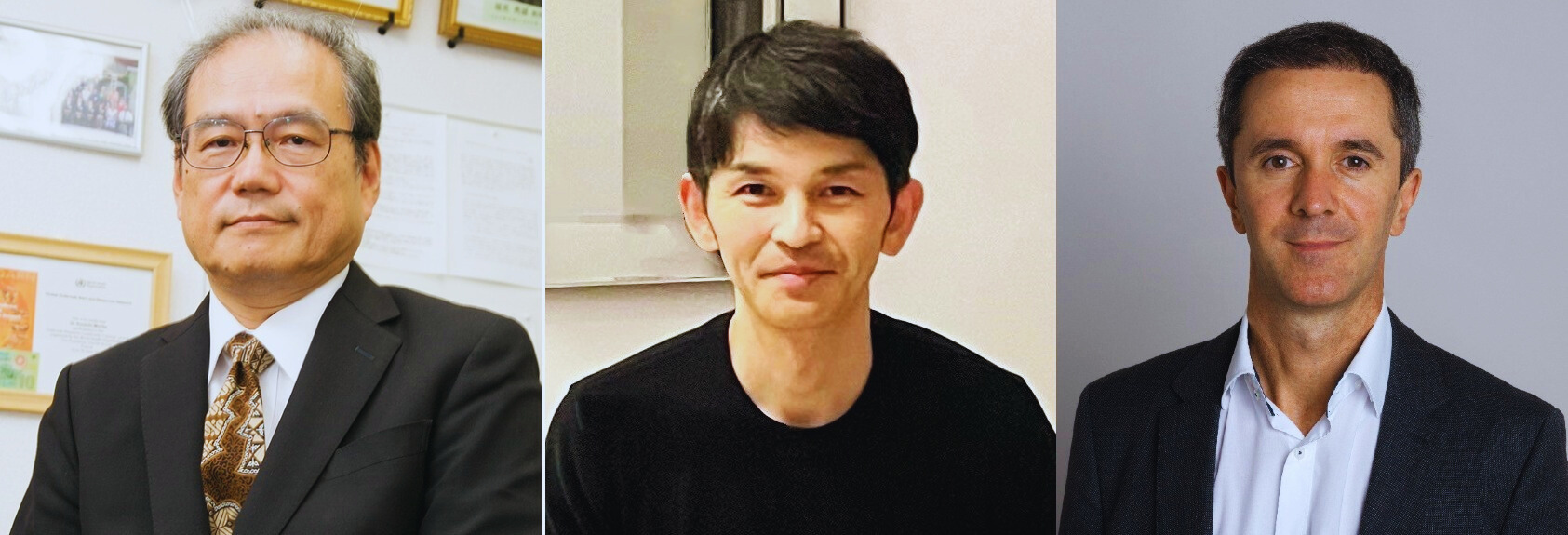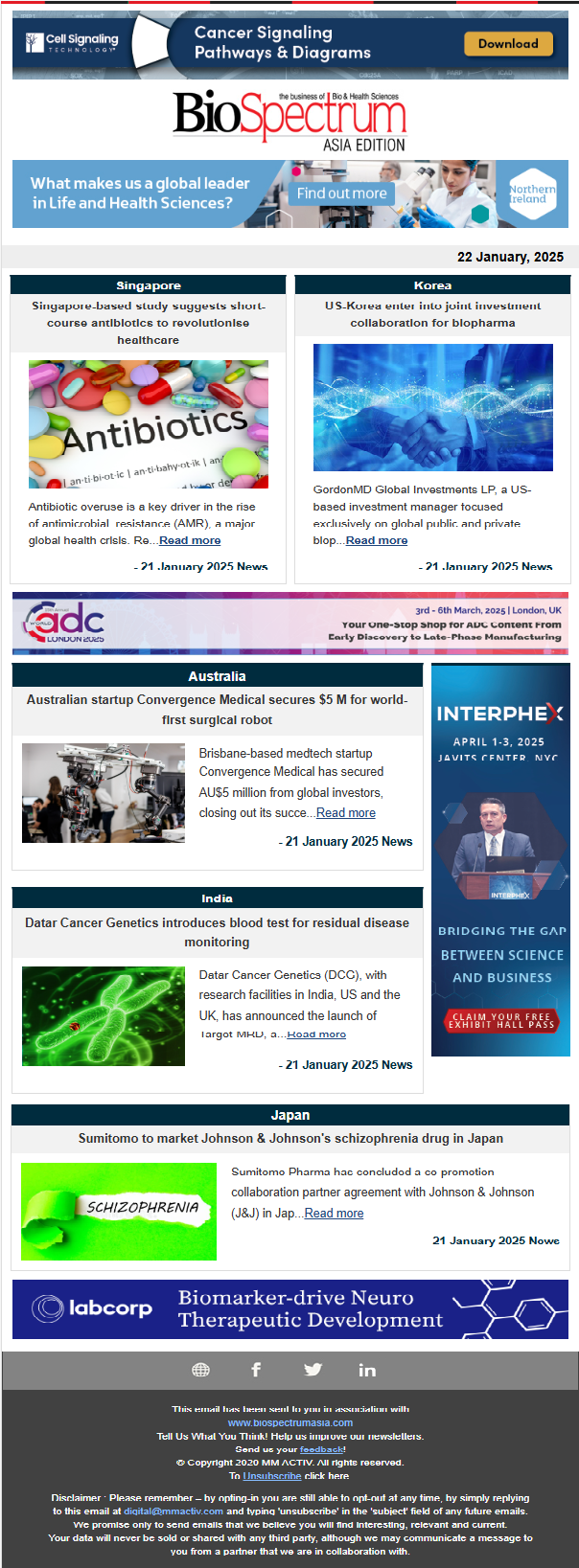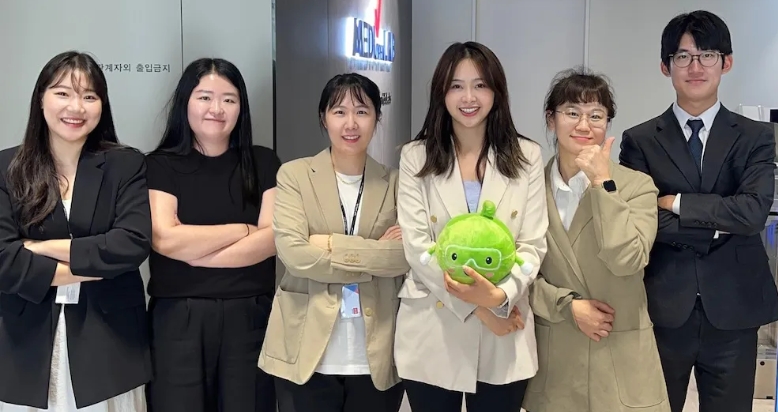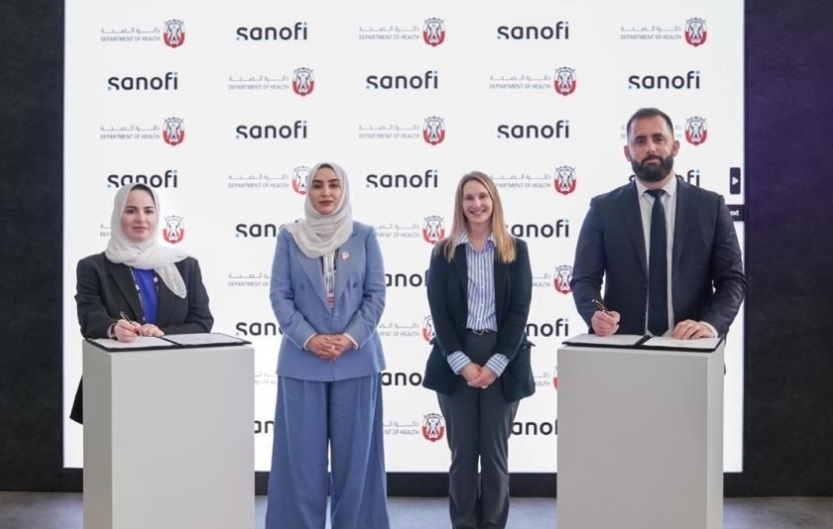
(From Left to Right)
Experts at Nagasaki University in Japan have developed a new "nanoball" mRNA vaccine platform aimed at tackling infectious diseases with pandemic potential. A key advantage of this platform is its ability to be freeze-dried and stored at room temperature, making it especially suitable for distribution in low- and middle-income countries without the need for cold-chain logistics.
This cutting-edge technology integrates artificial intelligence from NEC OncoImmunity to optimize vaccine design. The project has received a $5 million grant from CEPI (Coalition for Epidemic Preparedness Innovations) to support further development.
In an exclusive interview with Biospectrum Asia, distinguished researchers and pioneers who contributed to this groundbreaking discovery discussed the revolutionary breakthrough in detail illuminating prospects for future therapeutics.
Prof. Kouichi Morita, Nagasaki University:
The nanoball technology developed at Nagasaki University shows strong potential as a next-generation mRNA delivery platform with several advantages over conventional lipid nanoparticles (LNPs). One of its key features is the negatively charged outer shell composed of polyglutamic acid. While both the Nanoball surface and the cell membrane possess negative charges—typically thought to cause repulsion—the nanoball's nanoscale design and surface chemistry enable efficient cellular uptake, likely via endocytosis pathways that overcome simple electrostatic repulsion.
Furthermore, this polyglutamic acid-based coating plays a critical role in stabilizing the internal mRNA. By physically shielding the mRNA from enzymatic degradation and environmental stresses, the Nanoball significantly enhances the stability of its payload during storage and after administration. This is particularly important for deployment in regions where cold-chain logistics are limited.
Compared to widely used LNPs, Nanoballs could demonstrate:
Collectively, these properties could make the Nanoball platform highly promising for faster and more effective vaccine responses to emerging infectious diseases such as Disease X, as well as Severe Fever with Thrombocytopenia Syndrome (SFTS), while also offering practical benefits in terms of manufacturing, distribution, and field deployment.
Prof. Kouichi Morita, Nagasaki University:
Nanoball technology offers significant potential to address two major challenges in mRNA vaccine deployment: the need for improved stability and the optimization of immune response.
First, the Nanoball platform could provide enhanced mRNA stability through its negatively charged outer shell composed of polyglutamic acid. This biodegradable coating protects the mRNA from enzymatic degradation and environmental stressors, improving thermal stability and extending shelf life. Unlike conventional lipid nanoparticles (LNPs), which often require ultra-cold storage, the nanoball may allow for more flexible cold-chain requirements, an essential advantage for vaccine rollout in low- and middle-income and resource-constrained settings.
Second, Nanoballs are designed to facilitate efficient intracellular delivery despite their negative surface charge. Their nanoarchitecture supports effective cellular uptake—likely via endocytosis—and subsequent cytoplasmic release of the mRNA, which is critical for antigen expression and induction of a robust immune response. The scaffold can also be engineered to co-deliver immunostimulatory elements or display antigens in ways that enhance both humoral and cellular immunity.
For low- and middle-income countries, these features could be transformative:
In summary, the nanoball technology holds potential not only as a scientifically advanced delivery system but also as a practical innovation that supports greater global access to effective mRNA vaccines, particularly in low- and middle-income countries.
Prof. Kouichi Morita, Nagasaki University:
The partnership between NEC Corporation and Nagasaki University aims to accelerate the development of next-generation nanoball vaccines by integrating cutting-edge artificial intelligence (AI)-based antigen design with novel mRNA delivery technology. This collaboration is part of a CEPI-supported initiative to develop a vaccine candidate against Severe Fever with Thrombocytopenia Syndrome (SFTS), a high-consequence emerging infectious disease.
The key objectives of the partnership include:
This collaboration exemplifies how academic-industrial synergy, supported by global health partners such as CEPI, can fast-track vaccine innovation with both scientific rigor and practical scalability.
Mitsusaka Kitano, Project Lead, CEPI:
In this partnership, CEPI is both a funder and a facilitator. Our funding of up to $5m is supporting preclinical studies to investigate whether Nagasaki University’s next-generation technology could overcome challenges with current mRNA vaccines to help confront the next worrisome threat. Learnings could help to advance the development of a vaccine against SFTS, while also being applicable to other epidemic and pandemic viral threats.
The partnership with Nagasaki University and NOI also joins a growing network of hundreds of CEPI-supported partners working together to prepare for the next pandemic and advance the 100 Days Mission, an ambitious goal spearheaded by CEPI and embraced by Japan and other G7 and G20 nations to develop a vaccine against a new virus with outbreak potential in as little as three months.
CEPI can act as a facilitator, connecting Nagasaki University with relevant partners and research organisations to advance the research.
Prof. Kouichi Morita, Nagasaki University:
This project seeks to make a contribution to the control of Severe Fever with Thrombocytopenia Syndrome (SFTS) in East Asia by developing an innovative mRNA vaccine platform tailored to address this emerging threat. SFTS is a tick-borne viral disease endemic to parts of Japan, China, South Korea, and other regions in East Asia, with high case fatality rates and no approved vaccines or specific treatments currently available.
While the total number of SFTS cases remains relatively limited, the disease disproportionately affects high-risk populations such as farmers, forestry workers, and others whose occupations involve deep exposure to woodland and rural environments. By providing an effective vaccine, the project aims to protect these vulnerable groups, helping to safeguard essential rural and agricultural communities.
The project’s contributions to SFTS countermeasures and broader pandemic preparedness include:
Development of a targeted vaccine candidate: Leveraging AI-driven epitope prediction and nanoball mRNA delivery technology, the vaccine is designed specifically to protect against SFTSV infection, addressing a critical unmet need in regional public health.
Regional relevance and scalability: The project reflects the specific epidemiology and ecological risks of SFTS in East Asia, enabling tailored responses and informing cross-border surveillance and prevention strategies.
Platform adaptability for future threats: Although initially focused on SFTS, the Nanoball platform could be adaptable for other zoonotic or emerging infectious diseases, contributing to the 100 Days Mission and global rapid-response capabilities.
Strengthening regional R&D and manufacturing capacity: Through collaboration between academia, industry, and international funders, the project reinforces the vaccine development ecosystem in Japan and enhances preparedness for future public health emergencies.
In sum, the initiative supports both regional protection of high-risk occupational groups and global innovation in vaccine readiness for emerging disease threats.
Prof. Kouichi Morita, Nagasaki University:
Yes, the successful development of the SFTS vaccine in the project using the Nanoball mRNA platform would serve as a critical proof-of-concept for rapidly creating vaccines against future epidemic or pandemic threats, including the hypothetical “Disease X.”
This project seeks to demonstrate the integration of AI-driven antigen design with a next-generation mRNA delivery system that is both innovative and strategically distinct from conventional lipid nanoparticle (LNP) technologies. This could enable greater freedom to operate, facilitate independent global development, and reduce legal and licensing barriers, particularly for public or academic institutions and manufacturers in the Global South.
The Nanoball delivery system could also offer several technical advantages:
These potential features make the Nanoball platform not only scientifically compelling but also highly compatible with equitable access goals. Its simplified formulation and potential for technology transfer can accelerate local production in low- and middle-income countries (LMICs) and support decentralized manufacturing during future outbreaks.
By validating a scalable, IP-independent, and globally accessible vaccine platform, the success of the SFTS Nanoball project helps lay the groundwork for a faster, fairer, and more resilient pandemic response system, fully aligned with the 100 Days Mission.
Dr. Saverio, CEO, NEC OncoImmunity:
NEC Oncoimmunity will use its proprietary AI models to help design the vaccine. Next generation vaccines are targeted to specific antigen and are associated with a high level of safety and efficacy. However, these vaccines require the identification of a relevant pathogen target. This is where AI comes into play. Our tools can identify the precise regions of the pathogen that will lead to efficient protection. Furthermore, the precise knowledge permitted by AI can allow us to generate vaccine designs associated with higher efficacy. For instance, we have recently used this technology to design a vaccine against a large panel of coronaviruses by identifying targets that are found in different variants and different species of coronaviruses. A comparable approach can be used for SFTS
Mitsusaka Kitano, CEPI:
CEPI's vision is for the world to be able to respond to the next Disease X with a new vaccine in 100 days. Achieving that goal could defuse the threat of a pathogen with pandemic potential.
If the world had delivered a vaccine in 100 days from the time when the COVID-19 viral sequences were released, a vaccine would have become available in April 2020, when there were cumulatively just over 2 milliohithn cases of COVID worldwide, rather than in December 2020, when there were almost 70 million.
mRNA technology has been identified as a pivotal enabler of the 100 Days Mission due to its flexibility as a rapid-response platform on which new vaccine candidates can be designed and quickly made ready for clinical testing and subsequent scale-up, potentially within days from the moment a new viral threat is identified.
If successful, Nagasaki University’s nanoball technology could be key to unlocking improved rapid mRNA vaccine development, where mRNA vaccines are more stable and do not need to be stored and delivered at ultra-low temperatures to remain potent. Without the need for complex cold-chain requirements, this could open up the possibility of expanding access to nanoball vaccine doses in low- and-middle income countries.




